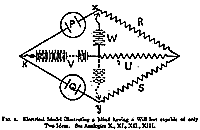Dorkbot:1 Inaugural Meeting
When:
June 4, 2003 - 7:00pm - 10:00pmWhere:
COCA
What:
Seattle-based sound sculptor, composer and inventor Trimpin will be talking about a topic he'll divulge when he's back in town next week. For more about Trimpin, see,http://www.otherminds.org/shtml/Trimpin.shtml.
Chris McMullen, ‘Aesthetic Movement’: Tacoma-based kinetic sculptor Chris McMullen will be running two of his loud, large, elegantly austere machines and talking about aesthetic movement: “there is movement all around us, every day, everywhere we go. from cars driving by, to cranes lifting material, to cargo ships coming in to port. most of which we take for granted, because it is normal everyday life. if you ever stop to look and take in what is happening around you, you may see the beauty in the mundane movements from here to there. inspired by industry, and machinery of all sorts, my work seeks to show the beauty of movement in simple actions, such as a hammer swing.”.


Maribeth Back, ‘Experiments in the Future of Reading’: one-time Seattle resident and now-Berkeley, CA-based researcher and designer Maribeth Back http://xenia.media.mit.edu/~mbb/ will be talking about her work in the field of multi-sensory design and the intersection of technology with reading: “The Listen Reader is a personal interactive reading experience that combines the look and feel of a real book - a beautiful cover, paper pages and printed images and text - with the rich, evocative quality of a movie soundtrack. It is designed to preserve and even heighten the experience of immersive reading. It explores the idea of multi-sensory reading: the use of background sound to provide a sense of place, and to add affect to the experience of reading a book without interrupting the flow of the story. The Listen Reader also preserves the beauty of the book as token object, embedded in a classic immersive reading environment: a comfortable chair, a polished hardwood swing-arm reading stand, a pool of light in an otherwise shadowed corner. The soundtrack is controlled by the motion of the reader's hands above the page; any motion within eight inches of the sensors is read as a volume, pitch, or pan control. Embedded RFID tags were used to sense the page looked at, and capacitive field sensors measure human proximity to the pages. Proximity measurements control volume and other expressive parameters of the sounds associated with each page.”.



Speeder Reader provides speed reading with speed racing controls, combining dynamic typography with a driving interface. A speed-reading protocol called RSVP (for Rapid Serial Visual Presentation) can allow people to learn to read up to 2000 words per minute. In Speeder Reader, a gas pedal controls the rate of speed-reading and a steering wheel navigates between streams of text. Speeder Reader is designed not only to illustrate a different method of text reading, but to provide a metaphor about personal control over the powerful medium of text: driving is a enabling tool for people in our culture.
|
Kick-off celebration!
|
Join us for beer, music, conversation and mingling after the speakers have spoken – this is the very first dorkbot-sea meeting, and we’d like to kick things off in style. We’re looking forward to seeing you there!
|
More about the speakers:
|
Chris McMullen, originally from reno, nevada, moved to seattle in 1999. background in graphic communication, and animation. started building sculpture in 1997, was previously interested in screen printing, drawing, painting, and computer graphics. has been building and showing large scale kinetic sculpture around the seattle area for the last four years.
Maribeth Back is a researcher and designer who builds and writes about real-world, socially informed exploratory applications for new technologies. She is especially interested in multi-sensory design: the practical integration of visual, sonic and haptic content with physical form and social context. As a senior research scientist at Xerox PARC (1996 - 2002), she worked with the RED group exploring emerging technologies. Her research included experimental augmented books, novel designs and sensor systems for wireless mobile interaction, physical computing, and audio systems for virtual and augmented realities.

